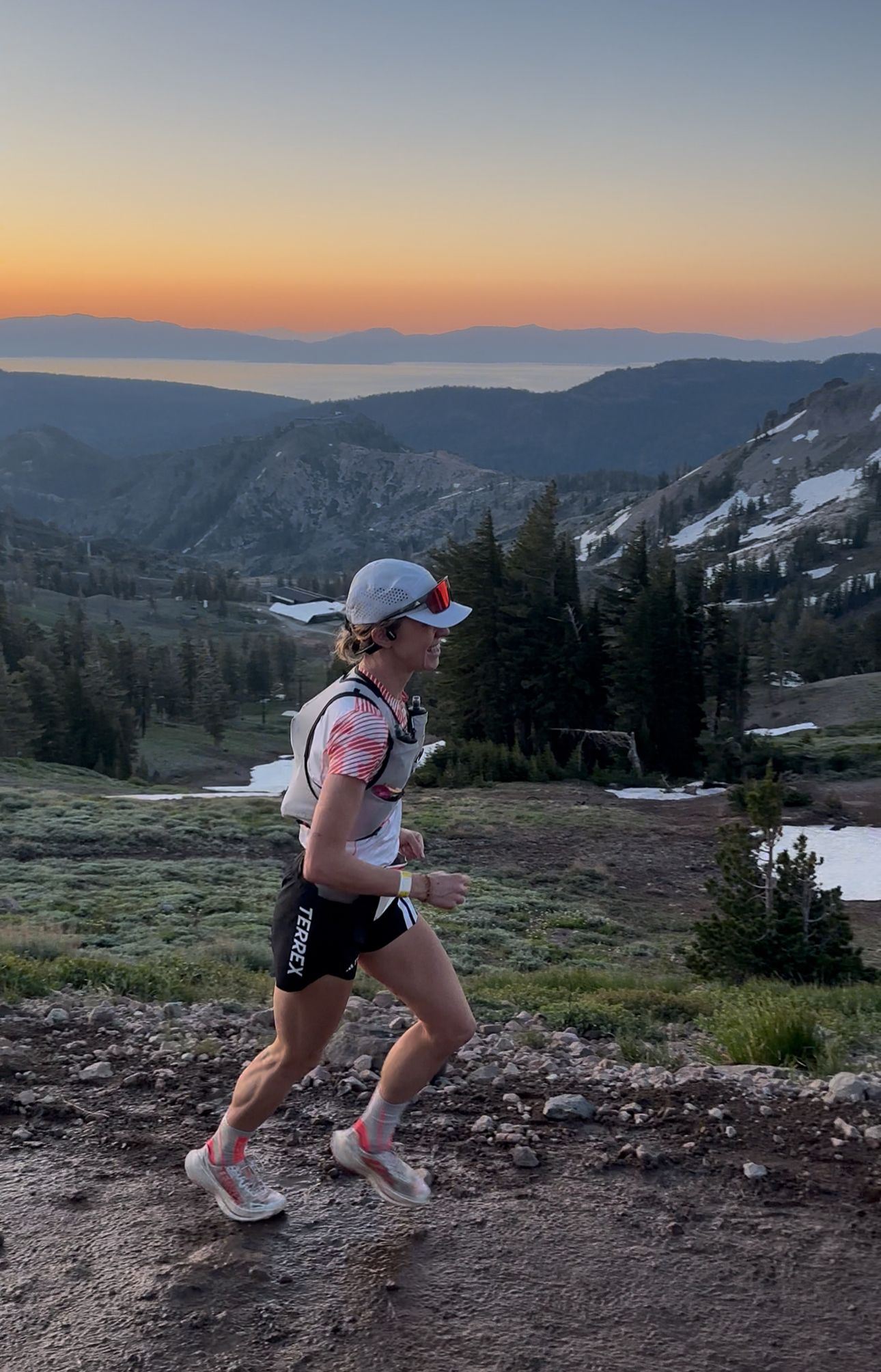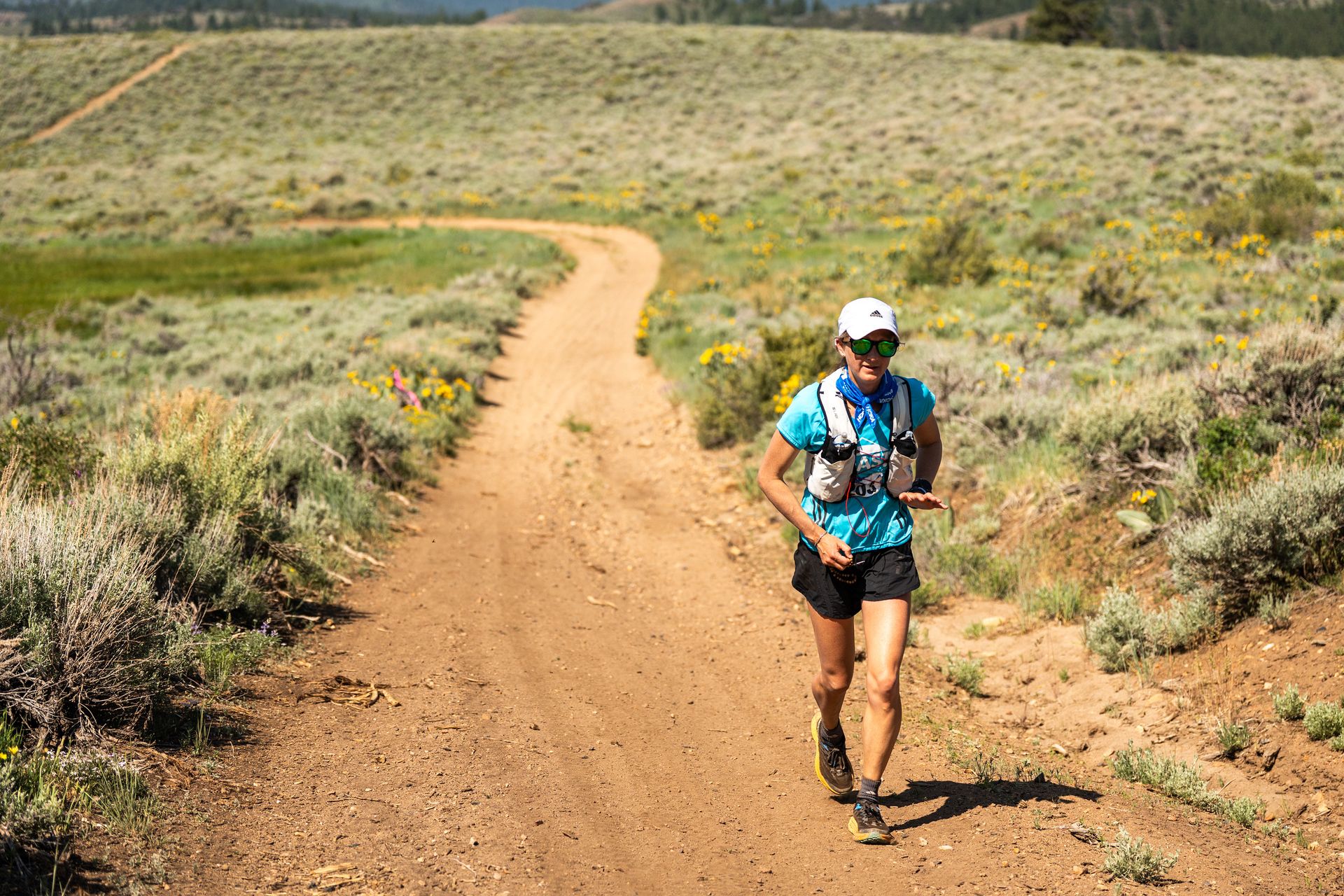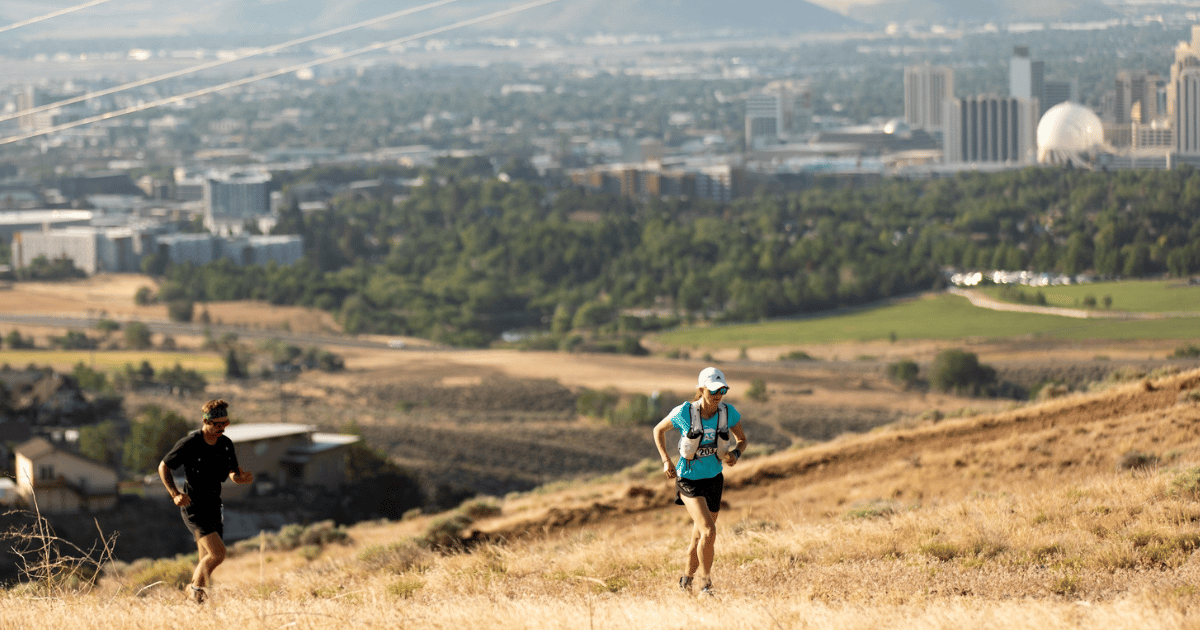In addition to our weekly newsletter every Thursday, ActiveRenoTahoe will occasionally send out articles from members of the local endurance community highlighting our region.
We are excited to have Bri Jaskot, a local ultra-runner and coach, back with another post. Last month, Bri shared some awesome Epic Mountain Peaks in RenoTahoe 🏔. This week, she’s sharing a list of some strategies to help you be prepared for racing in the heat.
How to be Prepared for your Race in the Heat
By Bri Jaskot
The “Super Bowl” of ultrarunning—the Western States Endurance Run—took place a few weeks back, and this year’s theme, even more than the ever-trendy high-carb fueling, was cooling strategies.
Cooling is a thing every year at Western States—runners drenched in their attempts to keep cool, ice bandanas around their necks, getting sponge baths at aid stations. But this year, one coaching group introduced a new strategy: kiddie pools filled with ice, allowing athletes to fully submerge themselves in freezing cold water.
Most notably, Abby Hall—the winner of the women’s race—was one of the athletes using this ice plunge method.

Abby Hall on the way to winning the Western States 100
As smart and effective as this is for lowering core body temperature quickly, it’s not exactly the most practical strategy to implement during your next hot race or adventure. Then again, maybe I’m wrong, and kiddie pool sales are about to explode. Maybe we’ll start seeing crews hiking into aid stations with toddler-sized plastic pools slung over their shoulders and a dozen pounds of ice in hand.
If you’ve got an ultra (or a different big outdoor adventure) coming up that could be a scorcher, what can you do now, in training, to prepare for the heat?
Get heat-acclimated.
The good news: heat adaptations are one of very few adaptations an endurance athlete can acquire that happen quickly. In as few as 7 exposures, you can see major improvements in how your body handles heat, including:
Sweating sooner and more (this is a good thing).
Lower heart rate in high temps
Lower rate of perceived exertion
Increased blood plasma volume
How to implement heat training:
1. Active heat exposure:
The simplest and most specific method—exercise in the heat. You don’t need to overdress; just schedule your workouts during the warmest parts of the day. Sessions should be 60 - 90 minutes in the heat.
2. Passive heat exposure:
This method is best for those who cannot workout consistently midday to get the active heat exposure or for those living in cooler temps than their race environment will be.
This includes hot water immersion (aka a bath) or dry sauna sessions. For best results, pair this with your workout—train first to elevate your core temp, then use the passive method to maintain that elevated heat load.
A few things to keep in mind:
Heat is an added stressor. Take it into account alongside your overall training load. If you’re already maxed out with life and training stress, this might not be the time to add more.
Increase your hydration during this period—it’s a smart move.
Passive heat exposure is uncomfortable. But listen to your body. More is not better. Stick to 20–30 minute sessions and pay attention to how you’re feeling throughout.
After the initial 7-10 days of exposure, you can maintain your heat adaptations by implementing a heat session every third day. It is best to back off at least 3 days pre-race.
Dial in your race day hydration strategy:
This should be tested and practiced during training. Hydration often plays a bigger role than fueling in long races, even though carbs are getting all the hype right now. You can slog through a bonk thanks to body fat stores, but it’s incredibly hard to come back from a hydration mishap—especially in the heat. And the severity of consequences is a lot higher with a hydration fiasco than missing some calories.
Step one to developing a personalized hydration strategy: Do you know your sweat rate?
I recommend using the Precision Hydration Calculator and doing a sweat test at home. Try to replicate race effort and race-day temperatures as closely as possible, since intensity and environment affect sweat rate the most.
Once you know your sweat rate and how much fluid you need for different durations, practice it in training, specifically your long training days. Does it feel like enough? Too much? Doing at least two sweat rate tests in similar conditions is a great idea to cross check your initial results.

Race day cooling tools: ice bandanas, hats, sleeves
Wearing an ice bandana or filling your hat or even arm sleeves with ice is a super practical and easy way to stay cool—on race day and in training.
If you’re looking for a solid option, Reno has a gal who makes a great one—I highly recommend the Kea Peak ice bandana!
Why practice with ice during training? Because you want to identify any gear issues before race day. Being wet for extended periods = potential chafing. Better to figure that out now than halfway through your race.
The training itself is obviously important to be prepared. But it’s crucial to remember that workouts aren’t the only kind of “training” that impacts your performance on race day. Remember:
Being heat-acclimated is training.
Having a hydration strategy is training.
Knowing how to stay cool and what clothing works well when wet—that’s training too.
A big thank you to Bri Jaskot for today’s post! Be sure to check out Bri’s coaching company, High Desert Endurance.
Until next time, stay active RenoTahoe!


